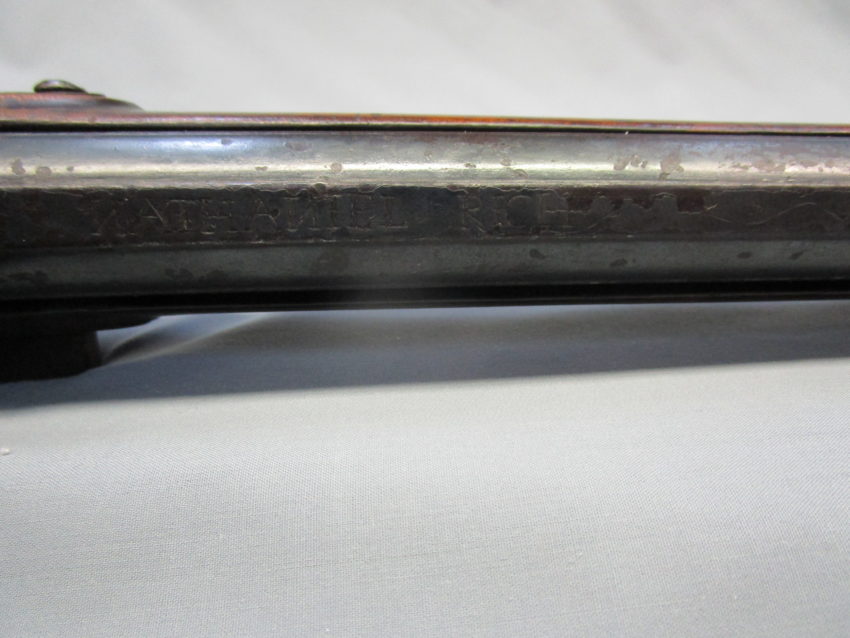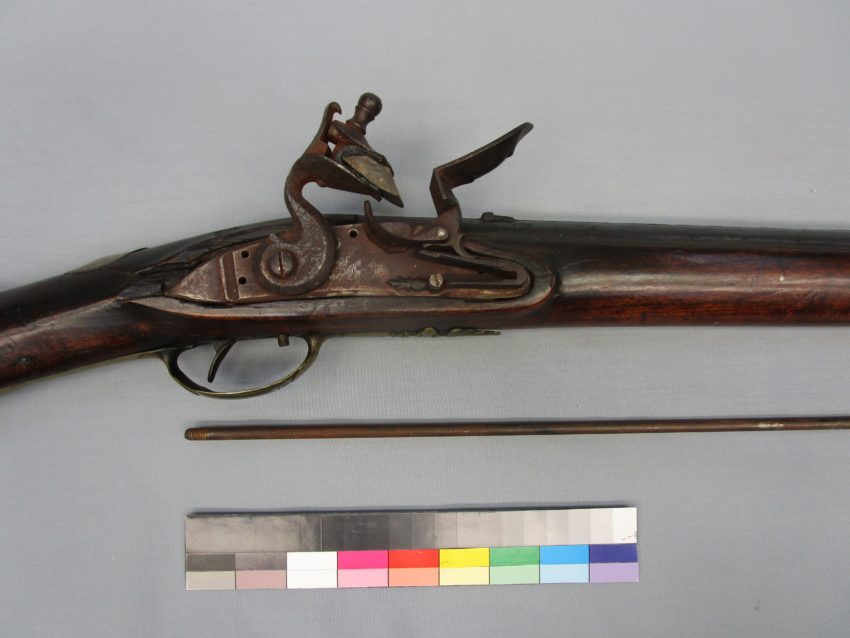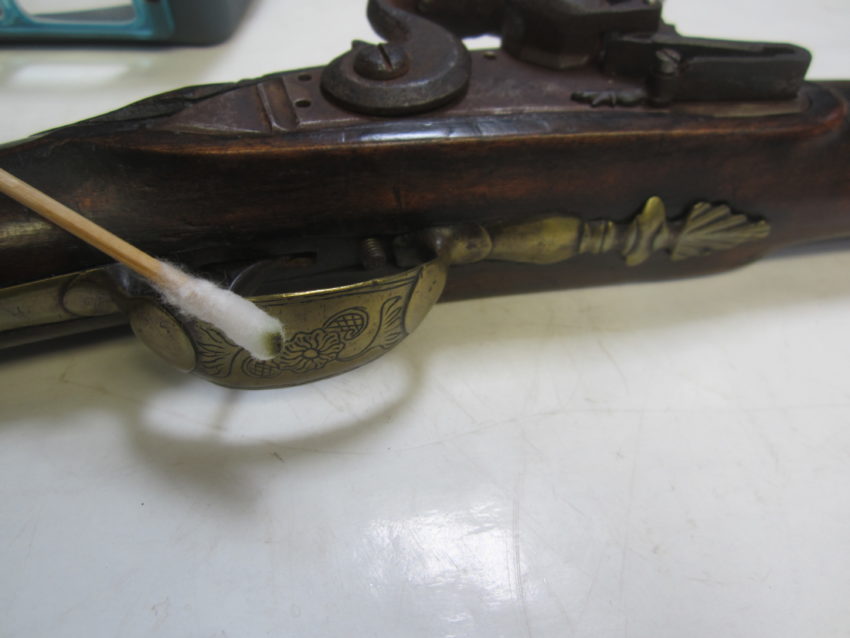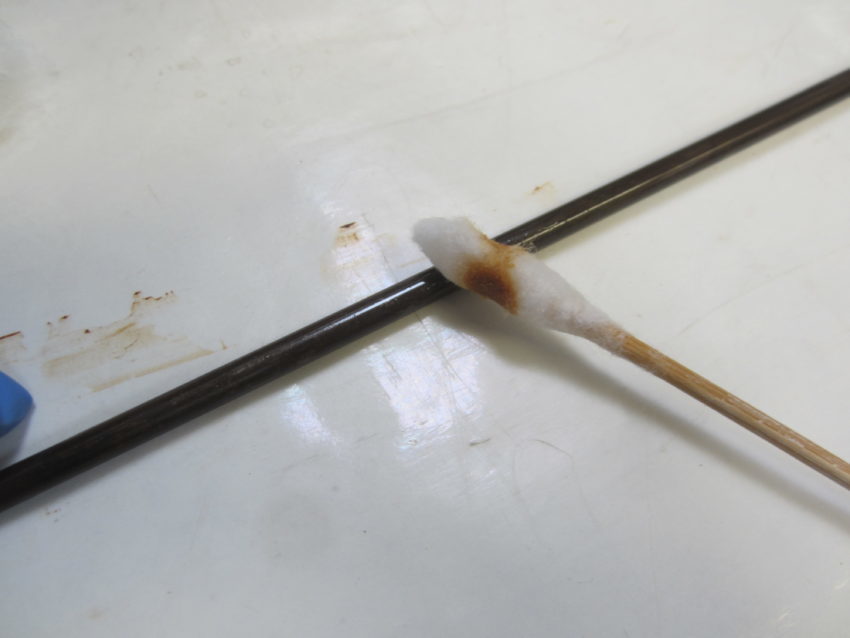The mid-18th century was a turning point in American history in which the colonial era ended, and the long road to independence began. Revolution, however, brought turmoil, uncertainty, and war. An object from this time, a 1760s American Revolution period fowler, recently underwent conservation treatment at McKay Lodge Conservation Laboratory performed by Objects and Sculpture Conservator, Christina L. Simms.

The firearm is generally cared for by the National Society of the Sons of the American Revolution, and the recent conservation treatment was made possible with a grant awarded by the Artist Preservation Group.
The fowler is a longarm flintlock mechanism firearm with steel and brass accents. It was likely fabricated during the 1760s and it was made to hunt fowl. The firearm soon took on another purpose as it was documented to have been used during the American Revolutionary War.
In October of 1776, General Horatio Lloyd Gates of the Continental Army called for additional militia to help defend Fort Ticonderoga. Among those summoned soldiers was Private Beriah Murray, who eventually came to own the 1760s American fowler. A naval battle thwarted the southern advance by the British, delaying the siege of Fort Ticonderoga until summer of 1777. Murray returned with his regiment from New Hampshire to again take part in the impending battle at Fort Ticonderoga.
In early July of 1777, the invading British forces overwhelmed the Continental Army, and General Arthur St. Claire, who now commanded the Fort, ordered a retreat to minimize the loss of life.

During this period, Private Murray might have acquired the 1760s American fowler from another fallen solider since the name “Nathaniel Rich” is inscribed on its barrel. No services records of Nathaniel Rich exist. Murray retained the American Revolution period firearm, and it was eventually donated to the National Society of the Sons of the American Revolution by descendants of Murray.
As with many objects that have survived war and almost three hundred years of history, the 1760s American Revolution period fowler had some condition issues despite being well-cared for throughout the years. Former restoration campaigns indicated some updated components and surface treatments. Overall corrosion of the ferrous (steel) alloy parts like the flintlock mechanism, barrel, ramrod and nonferrous components (metals other than steel) such as the buttplate, trigger guard, and ramrod pipes were the most apparent condition concerns requiring treatment.

Before treatment, it was verified that the firearm was not loaded or ready to fire. The firearm was then fully disassembled as possible. The stock was cleaned with dry methods. The crack in the stock and loose ramrod pipes were reinforced with hide glue.

Nonferrous components like buttplate, trigger guard, decorative plate and ramrod pipes were cleaned with common solvents to remove grease and previous polishing compounds. The latter material appears as a brownish green color on the cotton swab after treatment. Cleaned components were then coated with a cellulose nitrate product to prevent surface corrosion. The coating is reversible and it can be easily removed in the future if desired.

Rust on ferrous components required a more invasive, but still measured, approach to reduce the active and friable corrosion. Treatment included the use of abrasive methods as well as a tannic acid solution. The latter treatment converts corrosion into a more passive form, but it can cause darkening of the surrounding metal. For this reason, it is a chemical that should be used sparingly by a trained conservator familiar with the treatment of historic firearms. Since the barrel appeared to be blued, rust was carefully treated.

Severely corroded barrel pins were removed and replaced with steel stock of the same diameter so that the barrel could be secured. Despite their deteriorated condition, the pins were saved since it is unclear if they were original. The loose barrel loop was reattached with an adhesive; the same material was used to help secure barrel pins and the damaged screw of the decorative plate.

After the conservation treatment of the 1760s American Revolution period fowler, it was reassembled. One might argue that the firearm does not appear all that different; however, a significant amount of corrosion has been reduced and the object is now in stable condition. Proper RH and temperature, careful handling with gloves, and the new coating will help halt future deterioration, allowing this piece of American history to survive for the next generation to enjoy.
